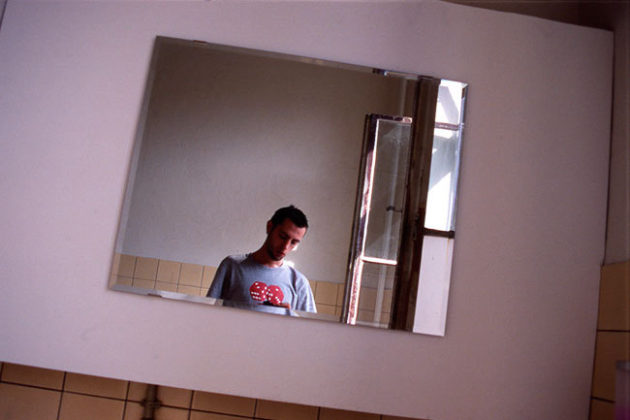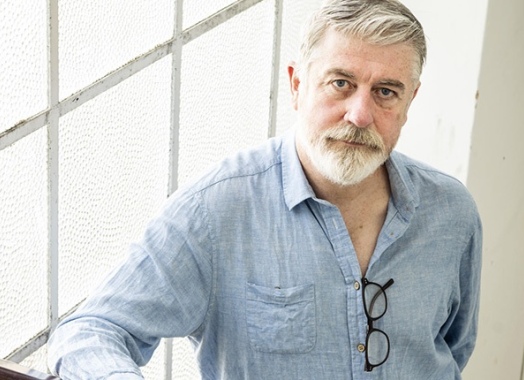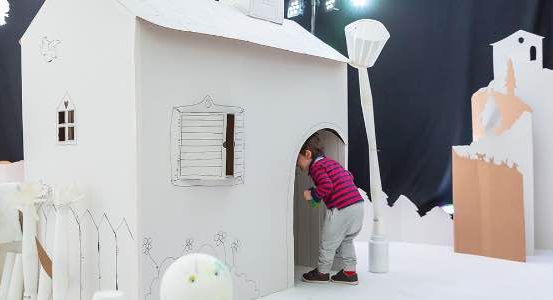
Artist Interview - David Blackmore

“My Da is an accountant and I’ve never really felt he enjoys his job, he just fell into it. The way I look at it is this - you only get one life and you're going to spend 35–40 years of it working ... it should be doing something you’re passionate about, that you love doing ... as long as I’m doing what I want and I am keeping my head above water I’ll be happy..”
(David Blackmore, February 2007).
ARTIST INTERVIEW: David Blackmore in email conversation with Nicola Murphy on Wednesday 7 February 2007.
Brief Introduction:
David Blackmore will present a series of photographs entitled Detox, in Draíocht's Ground Floor Gallery starting 9 March 2007. These images were taken in various locations in Dublin and the UK. Over the past decade institutions and public sector organisations within Ireland and the UK have used blue (UV) lighting in certain areas of semi-public space where intravenous drug users have been known to frequent. His work investigates these spaces, combining technical excellence, a painterly approach to composition and an acute awareness of the interaction of architecture, public space and the people who use it. David Blackmore is a London-based Irish artist, his series Detox was shortlisted for the 2005 Next Level, Vorsprung durch Technik Photography awards and has also been published in part by Gomma Magazine. Blackmore recently had a solo exhibition at Galerie Vassie, Amsterdam and has exhibited in group shows at the ICA London, the M+R Gallery London, and Iontas, at Sligo Art Gallery.
Q: Tell us a little about yourself, your background, where you’re from and where you live?
A: I live and work in the East end of London having moved from Dublin in 2003. I am originally from Terenure. I initially studied photography at Dun Laoghaire Institute of Art, Design and Technology and I continued my studies at The University of Westminster, London. Since then I have trained as a Further Education Tutor completing a Postgraduate Education Certificate [PGCE] at Reading University.
Q: How long have you been a photographer and why choose an arty profession over a more conventional career, like being an accountant, or working in an office for instance?
A: I have been taking photographs for 10 or 11 years now, although I’m not too sure if I would say I am a photographer. My Da is an accountant and I’ve never really felt he enjoys his job, he just fell into it. The way I look at it is this - you only get one life and you're going to spend 35–40 years of it working. If you are going to spend such a large part of your life working, it should be doing something you’re passionate about, that you love doing. It may not be the most financially secure route but the way I look at it is as long as I’m doing what I want and I am keeping my head above water I’ll be happy.
Q: Perhaps you also have a conventional day job to supplement your income as an artist and if yes does this interfere with your creativity and focus?
A: I currently work as a sessional Further Education [FE] Tutor at The University College for the Creative Arts, Surrey, UK, where I also work as an FE Photography /Audio Visual Technician. I work part time, which gives me the opportunity to get on with my own work. I am quite lucky because this work has been very flexible. Throughout my education I have seen teaching as a good way for an artist to supplement their income while allowing the flexibility to continue making work. Through my work at the University I come into contact with numerous practitioners covering all disciplines, which I find inspiring. I always have someone to show work to and get feedback from - sometimes a completely non-photographic perspective. If I want to learn how to do something new I can just ask.
When I was studying I worked at a number of Museums in London primarily the National Gallery where I met a lot of other artists, some of whom I have ended up working collaboratively with on some projects and publications. It gave me an insight into how museums work which was valuable experience.
Q: When did you take your first photograph and what was your subject matter?
A: I have always pressed shutters on cameras even as a kid. My Da always had a manual camera, which I used to mess round with even though I didn’t know anything about exposure or f-stops. I’m trying to remember what my first picture was. The first picture I intentionally took was most probably in Black and white of a bare autumn tree or it could have been taken at an ‘M people’ press conference at the Westbury Hotel while on work experience at The Irish Times in 1997?
Q: Has your style changed over the years and what might have influenced this change if yes?
A: I used to do a lot of biographical work which drew inspiration from Nan Golden and Wolfgang Tillmans, both in the subject matter and method of presentation. It used to be quite chaotic at times; my work now is clinical I suppose in its presentation and has a higher production value. 'Detox', my most recent body of work would share a visual language with the German school of photographic practice instigated by Bernd & Hilda Becher in Düsseldorf, but the work was also strongly influenced by installation artists James Turrell, Dan Flavin and the conceptual artist Yves Klein.
I would like to think I wouldn’t restrict myself in the production of new work by adhering to a specific style or genre. I hope my practice will evolve throughout my career. I like the idea of approaching a new body of work in a fresh manner, looking outside of the box and even breaking the box to pieces.
Q: Have you ever tried other art forms like drawing, painting or sculpting, making music, or dancing for instance?
A: When I was in school I always did art and got a kick out of it. I did a lot of drawing while at school. Then I got really in to taking photographs, not just the taking of the actual photographs but the whole process, like developing the film in the bathroom and making prints in the darkroom. I was really drawn to the photographic medium initially because of its perceived relationship to reality. I would like to become more skilled in other mediums in the future, which is the good thing about working in education because not only do I have access to the facilities but I also have experienced practitioners to show me the ropes and answer questions. At present I am planning on making some sculpted surfaces and photographing them, but its early days yet.
Q: What other artists or people have influenced or inspired you, and in what ways?
A: I feel privileged to have studied with so many genuine and talented people at IADT. We still are a close-knit group even though we now live all over Europe. They are a constant source of inspiration and support ... I am sure that most people who studied photography at IADT would say that David Farrell was and still is a source of inspiration.
In terms of artists working with photography, Hannah Starkey, Edgar Martins, and Dan Holdsworth would be of particular interest to me. Apart from artists working primarily with the photographic medium I am also drawn to installation artists working with light such as James Turrell and Dan Flavin. Edward Hopper the American painter has been a big influence as has Yves Klein and Mark Rothko.
Q: How do you keep motivated if you’re having a bad day?
A: I like to be kept busy - it serves as a distraction to problems sometimes. However going travelling I find really recharges the batteries and gets the creative juices flowing again. Sometimes I just need to completely remove myself from the situation - go for a wander, have a coffee or visit friends. I find family and friends have a great
knack of bringing me back down to earth and relaxing.
Q: How have you handled the business side of being an artist, promoting yourself and getting exposure, selling your work etc?
A: I was discussing this recently with a teaching colleague of mine in the UK. The creative side of things doesn’t take anywhere near as long in comparison to the amount of time putting together proposals for funding, submissions for publications and research relevant opportunities.
At first I found it difficult primarily because it’s not something that Colleges and University’s prepare students for [at least when I was studying]. What I mean by that is I hadn’t a clue how much to charge for a days work as an artist, how to draw up a contract or how to put together a proposal for funding or a commission. Luckily there are a number of organisations both here in Ireland and in the Uk such as Visual Artists Ireland and a-N in the UK, which offer advice on these issues. At first the business side of things and promoting your work can feel a bit removed from the original intention, but it is something that I have come to realise is part and parcel of contemporary art practice. Artists from my experience are usually quite savvy when it comes to the business side of things, as most self-employed individuals have to be.
Q: Could you tell us a little more about your forthcoming exhibition in Draíocht ‘Detox’? How did the exhibition come about and can you describe the work a little?
A: I was contacted by Carissa Farrell the Visual Arts Officer in Draíocht just over a year ago. She had seen some of my previous work in the Iontas 2003 catalogue and asked me to send her some more work. We were in correspondence intermittently throughout the year and we met up last autumn when I was back in Dublin.
I was working on ‘Detox’ from 2003-2005. I was initially attracted to the vividness of the blue lighting without really knowing why the light was used. Through research I found that the lights are used to deter intravenous drug use, usually within public toilets, specific spaces in which habitual users have been known to frequent. The reasoning behind their use is that under blue light it is difficult to find a vein. Veins being a blue/green colour do not appear visible to the eye under such conditions therefore restricting intravenous drug use within these spaces.
‘Detox’ deals with the stark contrast that exists between this arresting colour and the functional purpose of its installation in pubic spaces. The work enters into a discourse surrounding addiction and the control of the state and semi-public organisations. Heroin, along with crack cocaine above all other substances, seem to possess such power over the individuals concerned. For me each light, apart from performing a desired function, stands as a form of vigil light in the same way a lighthouse warns approaching ships.
Q: Do you have any advice you could give to an artist just starting out?
A: ‘There is nothing more common than unsuccessful people with talent; leave the house before you find something worth staying in for.” Bansky.
I like this quote because you have to be dedicated and persevere. There are so many people doing what you are that if you stop to think about the sheer volume of people competing, it can stump you. Most importantly you have to enjoy it. I am sure that most artists / creative individuals would agree that it‘s not just a career, it’s a way of life; cliché perhaps, but when you are passionate about something it seeps into every aspect of your existence.
Q: Where do you see yourself in 10 years?
A: Ideally I will be working largely on my own work supplementing my income through teaching and architectural/editorial photography.
Q: What are your interests and hobbies outside of photography?
A: Socialising with friends and family, going to exhibitions, music, travelling and yoga.
David Blackmore is represented by Gallery Vassie [Formerly The Hug Gallery for International Photography] Amsterdam .
www.davidblackmore.co.uk
David Blackmore's exhibition ‘Detox’, will be in Draíocht’s Ground Floor Gallery from 9 March to 21 April 2007.
For further information about this or any exhibition in Draíocht, please contact: Visual Arts Officer, Draíocht / Tel: 01-8098026
For Marketing or Press information please contact:
marketing@draiocht.ie
Discover More View all


Artist Support | Tobi Bello - Ethical Framework Development
Ethical Framework Development

Nicole Manning - Instagram Takeover
August 2025

Artist Studio Residency Announced: James McLoughlin
Visual Artist’s Studio Award
September-December 2025
